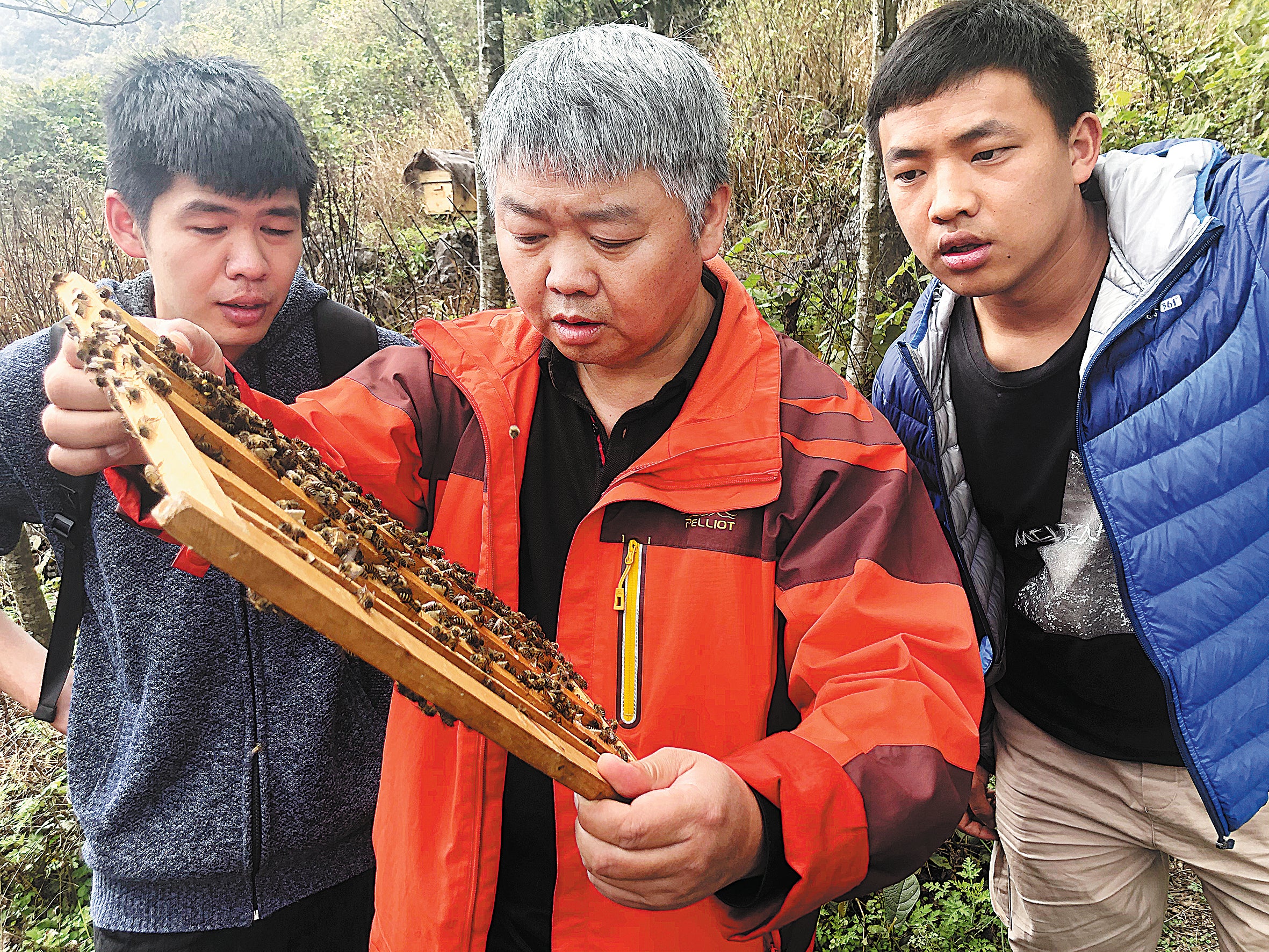How honey bees have helped turn on the lights
THE ARTICLES ON THESE PAGES ARE PRODUCED BY CHINA DAILY, WHICH TAKES SOLE RESPONSIBILITY FOR THE CONTENTS

Bees are a tiny but vitally important species for the Earth.
The World Wide Fund for Nature says that almost 90 per cent of the globe’s wild plants depend on insects for pollination, along with 75 per cent of leading crops worldwide.
Bees account for many pollinators. However, the insects face many complex, interacting threats.
In addition to climate change, one of the deadliest threats comes from humans in the form of pesticides and the expansion of residential areas, which is leading to a loss of habitat.
In China, the indigenous species, the eastern honey bee (Apis cerana), is one of the most-threatened families, said Kuang Haiou, an expert with the Apis cerana Research Institute at Yunnan Agricultural University.
The eastern honey bee is also threatened by the western honey bee (Apis mellifera), an invasive species widely introduced for crop pollination purposes in the 1930s, Kuang said.
“Unlike the eastern honey bee, which pollinates various plants with scanty levels of distribution, the western honey bee is accustomed to focusing on single-crop flowers. That is why the eastern honey bee plays a more crucial role in maintaining the ecosystem.”
In addition, western honey bees are larger than their eastern counterparts, which can easily be driven out of their original habitats. “In the fight for food, the invasive western honey bees have become dominant, with little hindrance,” Kuang said.
In recent decades the number of eastern honey bees has fallen sharply across a large part of China’s central plains, he said. “The number of eastern honey bees has fallen 70-80 per cent, the lowest ever.”
Conversely, Kuang said, the number of eastern honey bees in mountainous areas has gradually risen.
That is a result of strengthened environmental protection, such as stronger controls on the use of pesticides and measures to protect environmentally fragile areas. Furthermore, contributions from private groups and members of the public have been important for the species’ recovery.
In the south-western province of Yunnan, where mountainous forests are the last habitat for native bee species, the Society of Entrepreneurs and Ecology has been working to protect the eastern honey bee since 2015 by promoting beekeeping among villagers.
Experts, including Kuang, were invited to train local residents, design hives and provide professional guidance on disease control and reducing the use of insecticides. Nearly 800 residents of 20 villages in the region have received training. Now about 500 people can run bee farms independently.
In north-western Yunnan, the Himalayan honey bee (Apis cerana himalaya), a subspecies of the eastern honey bee, is crucial to the ecosystem because its pollination efforts play a large role in the reproduction and health of forest plants in the alpine areas, said Xiao Jin, vice-president of the Society of Entrepreneurs and Ecology’s Southwest Centre.
The Himalayan bee, which has a population of fewer than 200,000 in China, pollinates more than 70 per cent of wild plants, or about 7,000 plant species, in north-western Yunnan, Xiao said.
“Keeping a couple of beehives is a long tradition in local communities. The project has encouraged locals to run bee farms and plant medicinal herbs, such as multi-leaf Paris, at the same time. The two benefit each other and promote the sustainable use of local biological resources.”
In addition to providing technical support, the Society of Entrepreneurs and Ecology has helped with branding local honey and further encouraged greater participation of bee farmers via promising incomes from the environmentally friendly business.
So far, farmers in the programme who own eight to 14 beehives can earn 8,000 yuan (£930) a year on average, equal to income from selling two cows that would take four years to raise from calves to adults.
Previously published on Chinadaily.com.cn
Subscribe to Independent Premium to bookmark this article
Want to bookmark your favourite articles and stories to read or reference later? Start your Independent Premium subscription today.